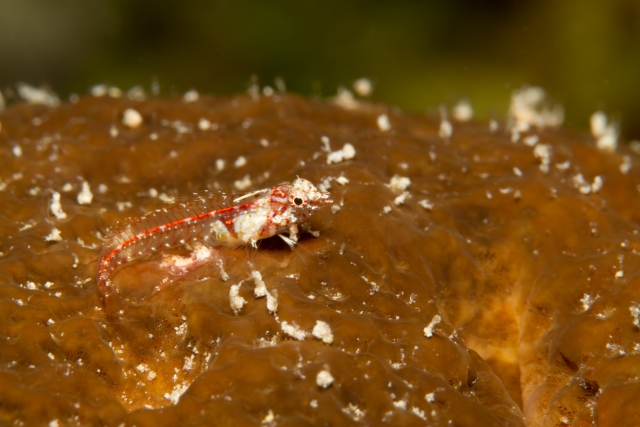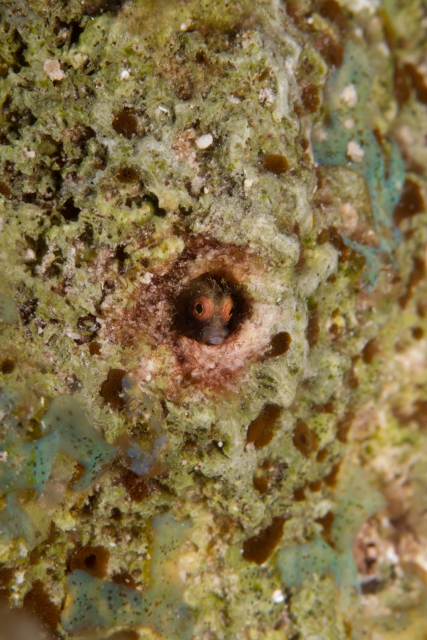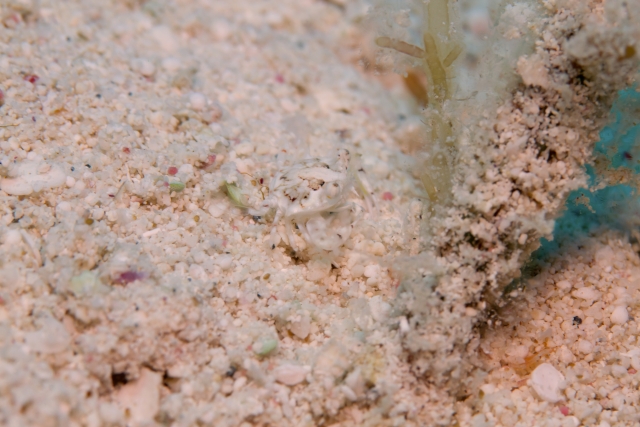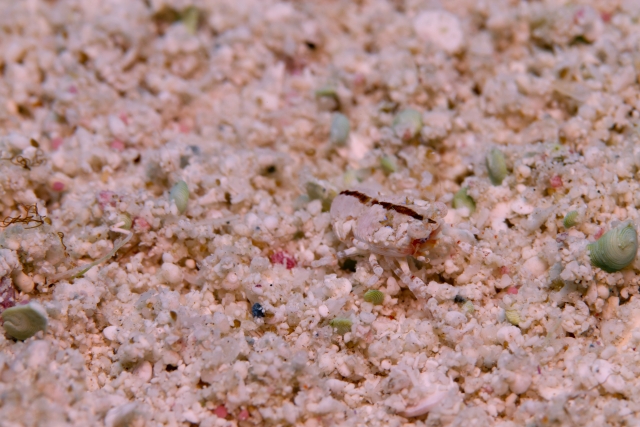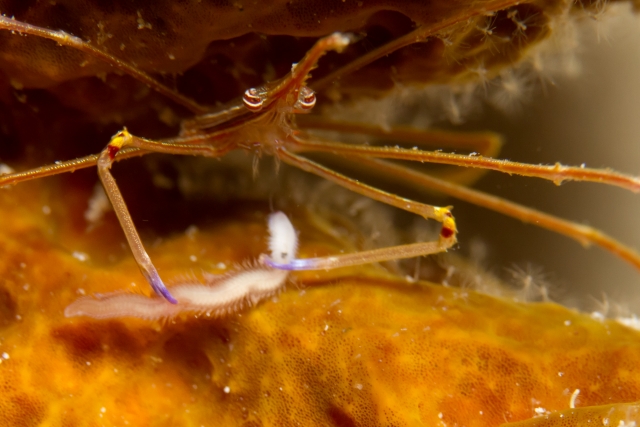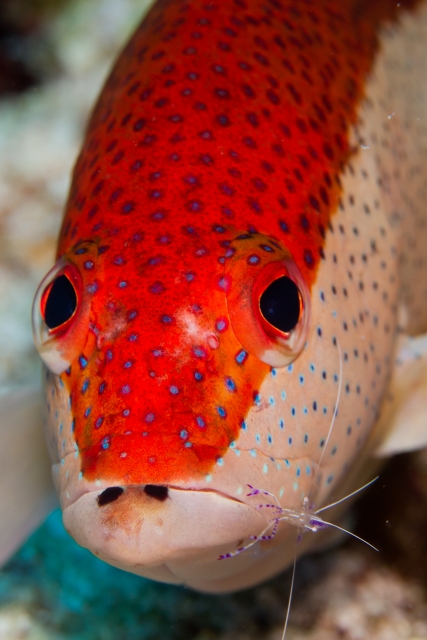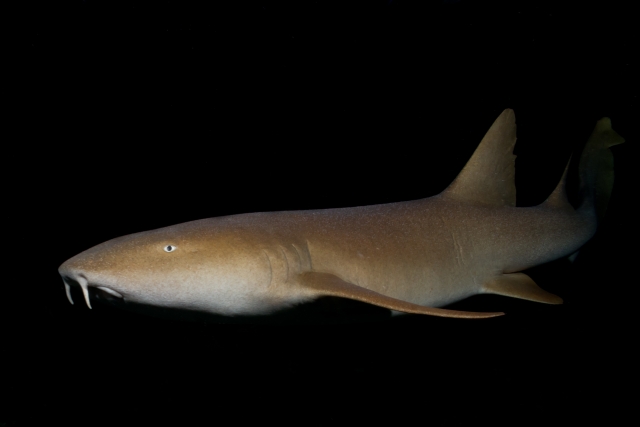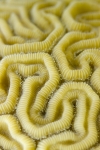Turks and Caicos Explorer: Nudibranchs
ktuli — Wed, 12/05/2012 - 19:39
We didn't get to see many nudibranchs on this trip, but here are a couple shots of the two species we did see...
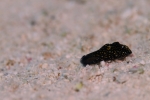 |
 |
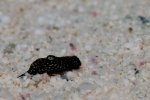 |
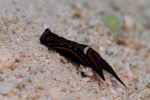 |
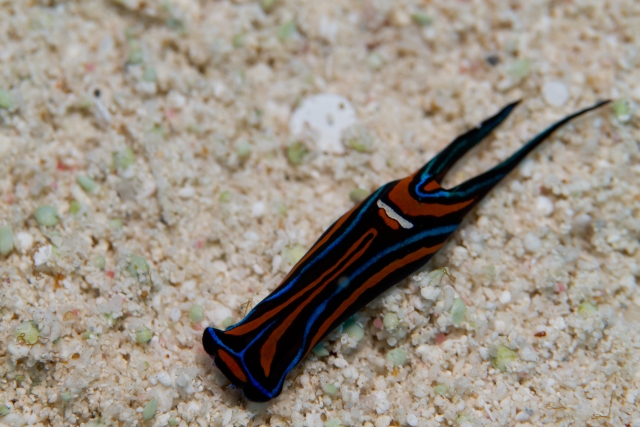 |
|||
There's a trip to Wakatobi planned for Feb 2014, so I'm looking forward to that for my nudibranch fix.
- Bill
Turks and Caicos Explorer: Find the Reef Critter
ktuli — Mon, 12/03/2012 - 20:25
So if you've been following along, you'll know that I love finding the little stuff. On land, it is one thing... and I'm constantly looking for bugs and spiders. On the reef, it takes on an entirely new challenge. Like the search for the Gaudy Clown Crab, finding interesting and beautiful tiny little creatures while on a dive is something I take great pride in doing.
Normally I would post cropped photos with their originals available with a mouse-over action. Instead, for these, I'm going to post the original and let you see if you can spot the tiny little critter. If you're having a hard time, simply mouse-over the image for a cropped view that should help...
We'll start off with something easy...
Technical Data: Canon EOS 7D, Canon EF 100mm f/2.8L Macro IS USM, 1/200th sec at f/16. Image Stabilization on. ISO 160. Ikelite Housing and Port with Ikelite 161 Strobe in TTL Mode. Raw conversion in Photoshop CS5.
Too easy? Ok - well, think about it this way. That shot was taken at 1:1.5 magnification. That means the frame is 1.3 inches x 0.9 inches. Looking at how much of the frame that Roughhead Triplefin (Enneanectes boehlkei) takes up, I'd estimate that it was only a mere 0.75 inches long. Sure - he stands out while sitting on top of that sponge, but still... that is a translucent bodied fish with some white markings (that mimic the white detritus stuck to the sponge) in a vast ocean.
Ok - this next one should be fairly easy too...
Technical Data: Canon EOS 7D, Canon EF 100mm f/2.8L Macro IS USM, 1/200th sec at f/16. Image Stabilization on. ISO 160. Ikelite Housing and Port with Ikelite 161 Strobe in TTL Mode. Raw conversion in Photoshop CS5.
That shot is also at 1:1.5 magnification, which makes that little guy about 0.15 inches high if my math is right. It is either a Roughhead (note the fringes above its eyes in the zoomed version) Blenny (Acanthemblemaria aspera) or a Secretary Blenny (Acanthemblemaria maria) - I can't tell which without more visibility to the markings on the side of the fish. I posted another blenny from last year's trip as well for more examples of these tiny little fish.
Alright, that's enough of the easy ones. Now we'll take a look at where camouflage and tiny size come together to make for an truly difficult find...
Technical Data: Canon EOS 7D, Canon EF 100mm f/2.8L Macro IS USM, 1/160th sec at f/11. Image Stabilization on. ISO 160. Ikelite Housing and Port with Ikelite 161 Strobe in TTL Mode. Raw conversion in Photoshop CS5.
That little guy is some sort of crab. I'm not able to find it in any of the identification books I have (not really surprising). Who knows - it could be a baby of some larger species of crab, or it could be that small all the time. Perhaps I found something no one else has ever seen before. All I know it is was tiny - probably in the range of 1/5th of an inch - and blended in perfectly with the sand.
Technical Data: Canon EOS 7D, Canon EF 100mm f/2.8L Macro IS USM, 1/200th sec at f/11. Image Stabilization on. ISO 160. Ikelite Housing and Port with Ikelite 161 Strobe in TTL Mode. Raw conversion in Photoshop CS5.
That ridiculously tiny and cryptic thing appears to be some sort of shrimp or maybe even a lobster larvae. Once you see it, that dark stripe really stands out, but considering this was spotted just out on the sand, it really wasn't easy to spot.
Having said all that, don't ask how I spot these things - the answer is "I just do". I can't explain it, I can't tell you what specifically I look for - I just scan constantly and things jump out at me. A line that breaks a pattern (eyes are usually a dead giveaway), or a pattern itself in some camouflage, or a tiny bit of movement - regardless of what it is, my eyes are constantly searching when I'm on a dive. Searching for the next awesome little critter to zoom in on and reveal a view on something most people don't get to see.
When's my next dive trip scheduled???
- Bill
Turks and Caicos Explorer: Arrow Crab Dinner
ktuli — Tue, 11/20/2012 - 19:40
Ok - a few posts ago, I mentioned that I would share a photo of an arrow crab that caught a blood worm just as I was taking photos of it.
The blood worms are harmless worms that swim in the water. Usually they are less than an inch long, though we did see some that were several feet long. During night dives, they are attracted to the lights, and honestly can get downright annoying. When you get too many in front of your dive lights, there are a couple things you can do. First, you can just turn off your dive light and they'll disperse - if a friend is nearby, they'll all swarm to their light while you swim away laughing. Second, you can feed them to brain corals... simply move your light close to a brain coral and the blood worms haplessly swim into the coral and are trapped and eaten. Or, if you're really lucky, you can feed other reef critters...
Technical Data: Canon EOS 7D, Canon EF 100mm f/2.8L Macro IS USM, 1/120th sec at f/8. Image Stabilization on. ISO 640. Ikelite Housing and Port with dual Ikelite 161 Strobes in TTL Mode. Raw conversion and cropped in Photoshop CS5. (mouseover for original uncropped version).
I seem to have taken a break from processing photos. I have seven dives left to process, so hopefully with the added time off from the holiday, I can possible get through the rest of them and get on a more regular posting schedule.
Stay tuned.
- Bill
Turks and Caicos Explorer: More Reef Dentistry
ktuli — Wed, 11/14/2012 - 20:59
Sorry - been a little lax with posting, so I'll try and get back to sharing photos from the trip more regularly. I still have about seven more dives to process the photos from.
Last year, I shared a shot of a Pederson's Cleaner Shrimp on a Spotted Moray Eel. Well, this year, I caught one on a Coney.
Technical Data: Canon EOS 7D, Canon EF 100mm f/2.8L Macro IS USM, 1/200th sec at f/11. Image Stabilization on. ISO 160. Ikelite Housing and Port with Ikelite 161 Strobe in TTL Mode. Raw conversion and cropped in Photoshop CS5.
- Bill
Verteran's Day 2012
ktuli — Sun, 11/11/2012 - 19:41
Technical Data: Canon EOS 7D, Canon EF 50mm f/1.8 II, 1/100 at f/8. ISO 100. Raw conversion in Adobe Camera Raw.
Turks and Caicos Explorer: New Wallpaper
ktuli — Tue, 11/06/2012 - 20:16
Ok just a quick post today to share what has become my new wallpaper on one of my work monitors...
Technical Data: Canon EOS 7D, Canon EF-S 18-55mm f/3.5-5.6 II at 18mm. 1/120 sec at f/22. ISO 320. Ikelite Housing and Port with dual Ikelite 161 Strobes in eTTL mode. Raw conversion and cropped in Adobe Camera Raw (mouseover for original).
Thanks for stopping by.
- Bill
PS: If you haven't voted on the other nurse shark photo or seen the videos, keep scrolling!
Poll: Turks and Caicos Explorer: Nurse Shark Cropping
ktuli — Mon, 11/05/2012 - 19:18
I absolutely love this photo - and the best part about it... it works in so many different ways.
Check out the different crops below and then vote on which one you like best.
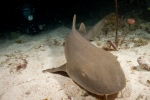 2x3 Horizontal Original |
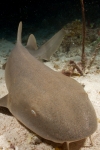 2x3 Vertical Crop |
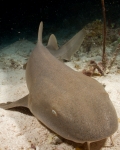 4x5 Vertical Crop |
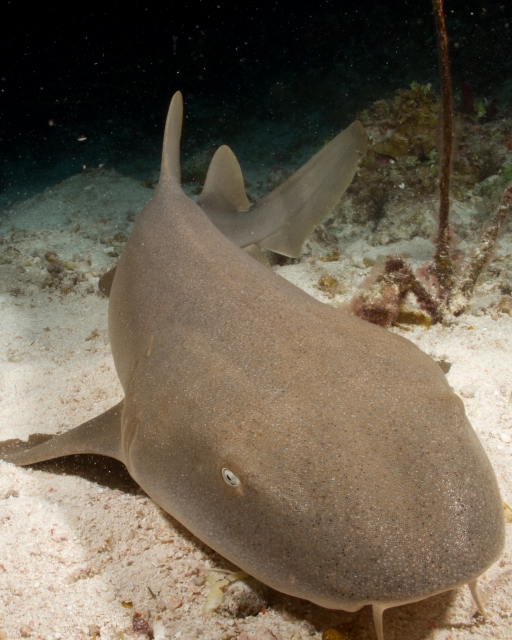 |
||
Technical Data: Technical Data: Canon EOS 7D, Canon EF-S 18-55mm f/3.5-5.6 II at 18mm. 1/120 sec at f/22. ISO 320. Ikelite Housing and Port with dual Ikelite 161 Strobes in eTTL mode. Raw conversion and cropped in Adobe Camera Raw.
In the original framing, I love how you can see one of our dive friends - Jim - in the background also taking photos of the sharks. In particular, I love how wide Jim's eyes look through his mask. With the 2x3 vertical crop, I felt that since the shark's face is so close to the front of the frame, I would crop in tight and let it almost fill the frame - the one downside to that is that its pectoral fin gets cropped out in the process. Which is why I changed ratios and went with the 4x5 crop.
In the end, I really love every version of this photo... Vote below and let me know which one you like best.
- Bill
Turks and Caicos Explorer: Petting the Nurse Sharks
ktuli — Sun, 11/04/2012 - 19:46
Ok - let me preface today's post with a warning... Don't this this on your own. Sharks are definitely still wild animals, and while nurse sharks seem docile, they are responsible for many diver accidents every year - mainly because dives pester them and do not respect their space. These nurse sharks had been swimming near us for several days, and we were able to observe their behavior and had several members of our group who have experience working with the sharks. We let the sharks come and go as they pleased and never prevented them from doing what they wanted to do. We just gave them light scratches and petting, never grabbing a hold of the shark or touching near their face/mouth. Again - do not try this on your own.
This was a pretty awesome experience. These sharks were fairly small - in the range of 3 - 4 feet. Though we did have larger ones swimming in, they didn't really have any interest in being petted - they were hunting.
The little one really liked my camera and kept swimming closer and closer, I got a couple shots of her so close that her face in underneath the lens! But I did get one shot that I absolutely love and I'll share that tomorrow.
- Bill
Turks and Caicos Explorer: Fluorescing Corals (part 2)
ktuli — Thu, 11/01/2012 - 20:16
OK - this stuff is too cool, so here's another blast of fluorescing coral photos (today we're doing all vertically oriented photos).
One extra cool thing to note in this batch... the top photos on either side show a closed coral and the same coral with its feeding polyp tentacles opened. Pretty awesome, no?
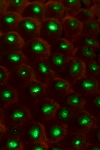 |
 |
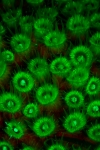 |
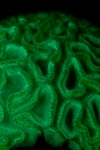 |
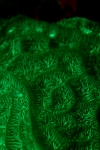 |
|
 |
 |
|
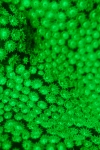 |
 |
Technical Data: Canon EOS 7D, Canon EF 100mm f/2.8L Macro IS USM with Yellow 12 Filter, 1/120th sec at f/8. Image Stabilization on. ISO 640. Ikelite Housing and Port with dual Ikelite 161 Strobes in TTL Mode both with NightSea BE3 Excitation Filters. Raw conversion in Photoshop CS5.
The second photo on both sides appear to be two different types of brain coral. One of the fun things we like to do during night dives is feed blood worms to the brain corals - I don't have any photos of that, but I do have a shot of an arrow crab catching a blood worm that I will share soon!
Stay tuned!
- Bill
Turks and Caicos Explorer: Fluorescing Corals (part 1)
ktuli — Wed, 10/31/2012 - 18:49
What up, fishes!?!
One of the things that I wanted to do on this dive trip was to check out the fluorescence on the reefs. You may have seen some of my land-based results with jumping spiders, but I still was blown away by the results I got.
The equipment I bought was made by NightSea and includes an excitation filter that goes on your light source (flash/strobe) and a yellow lens filter that acts to eliminate the color of the excited light. Basically, the excitation filters produce a bluish light that is the correct wavelength to induce the most common fluorescence responses - the yellow filter then removes that bluish light and returns things back to normal. We also had a special flashlight that had the blue excitation light, plus some yellow filters that went over the front of our masks so we could see the fluorescence effect that way too.
The results were stunning...
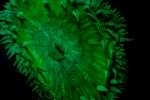 |
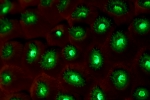 |
 |
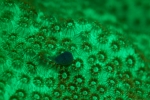 |
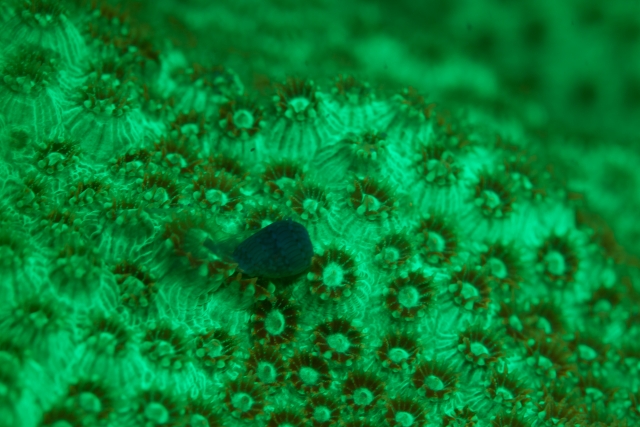 |
|||
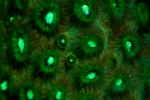 |
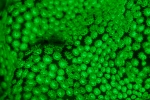 |
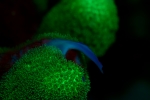 |
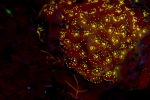 |
Not everything fluoresced on the reefs, so as we shined our lights along the corals, some would glow incredibly bright while others were just black and did nothing. I searched around for small critters like crabs and shrimp, but considering there were always hungry sharks or large horse-eyed jacks feeding during out night dives, it wasn't always the easiest thing to be looking for little stuff while not being able to see anything that wasn't fluorescing.
Maybe next time (and hopefully next time is soon!).
- Bill

